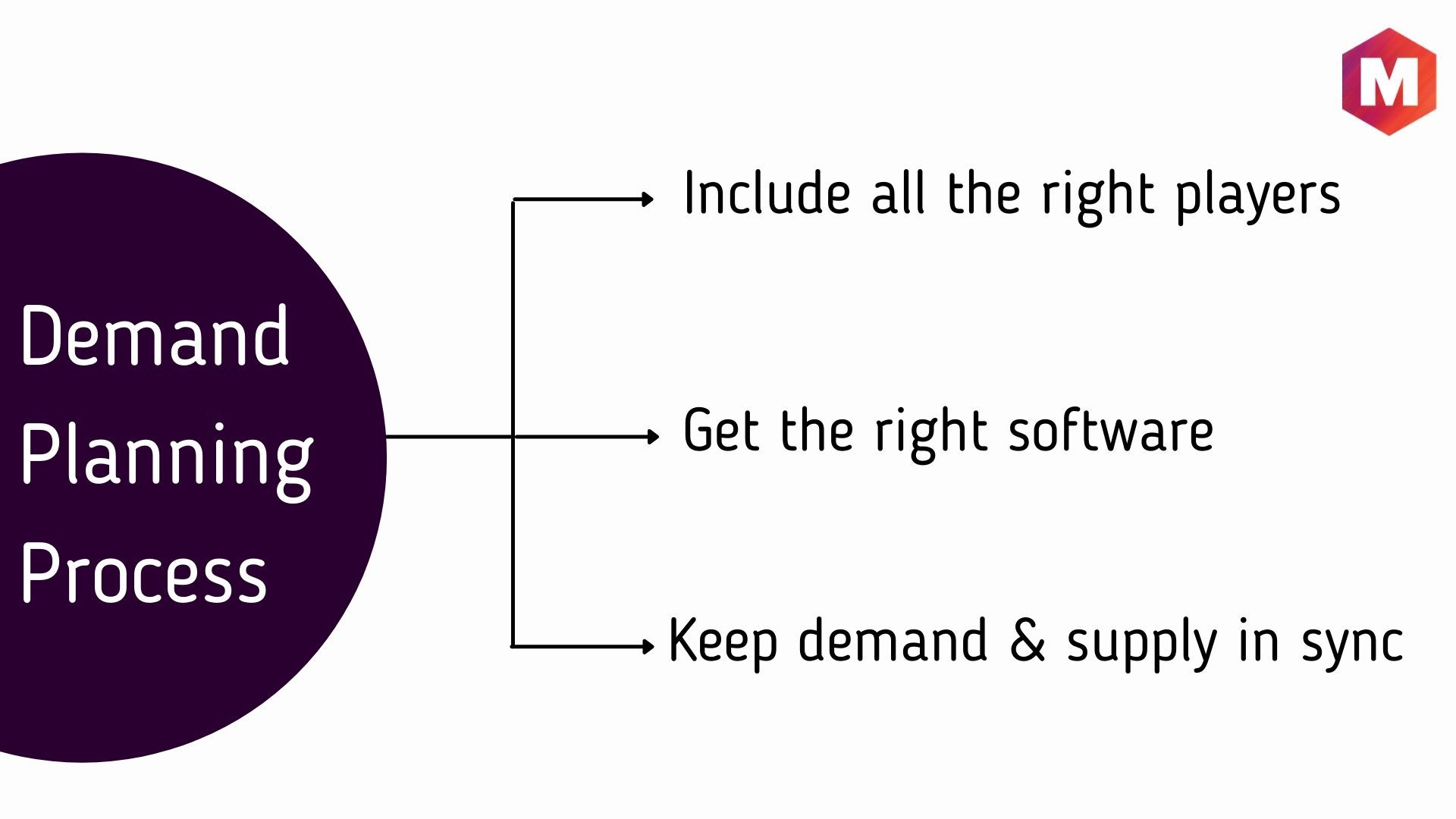
Types of Demand Planning and Why it Matters

Demand planning is the process of forecasting the demand for a service or product to ensure efficient production It is vital for customer satisfaction, minimizing the bullwhip effect, proactive organization, better revenues, negotiation with suppliers, and reduced waste Key steps include involving all players, using the right software, and keeping demand and supply in sync Demand planning differs from demand forecasting and is the future of efficient production
What is Demand Planning?
Efficient production relies on accurate demand planning, which forecasts the future demand for a product or service. This can be driven by internal factors, such as material needs for production, or external factors, like customer orders. The ultimate goal of demand planning is to anticipate demand and ensure the company can meet it while minimizing unnecessary expenses.
Importance of Demand Planning
Demand planning is a crucial aspect of supply chain management as it helps companies accurately forecast customer demand and plan their production accordingly. This process involves a team of professionals, such as sales managers, production managers, finance managers, marketing managers, demand planning analysts, and demand planners, who work together to create an effective demand planning strategy.The process of effective demand planning is considered important for companies because of the following reasons
1. Customer satisfaction and customer loyalty
When an organization fails to meet the demand for a product, it not only jeopardizes customer satisfaction but also risks losing valuable customers. However, with accurate statistical forecasting, businesses can ensure that they have sufficient inventory levels to meet consumer demands, resulting in customer satisfaction and loyalty in the long run.
2. Minimize the bullwhip effect
Effective demand planning involves utilizing statistical forecasting and clear communication between supply chain demand planners. By minimizing fluctuations in demand, the bullwhip effect can be reduced.
3. Makes the organization proactive
Accurate demand forecasting enables companies to stay ahead of the game by avoiding last-minute surprises and being proactive in meeting customer demand. This puts the organization in the driver's seat and allows for effective planning to ensure smooth operations.
4. More gains and better revenues
Accurate demand planning is crucial for companies to maintain a competitive edge and respond quickly to unexpected market shifts. By avoiding stock-outs, dissatisfied customers and managers, excess inventory, and wasted resources, companies can optimize their operations and increase profitability. By utilizing demand forecasting based on comprehensive data and insights, companies can anticipate market demand and achieve better financial outcomes.
5. Better negotiation with suppliers
The demand planning process is considered important for companies as it offers various negotiation opportunities with suppliers based on terms as well as pricing
6. Reduced waste
By implementing efficient demand planning procedures, corporations can ensure that their inventory levels remain aligned with current demand. By avoiding the manufacture and storage of excess products, companies can minimize waste and optimize their operations.
Elements of Demand Planning
The elements of demand planning processes are
Statistical analysis of inventory, sales etc.
Moulding the information and data to forecast future demand
Data collection from sources that can influence or predict consumer demand for a product
:
- Collaborating with salespeople, manufacturers, and suppliers to gather information on potential events that may affect customer demand, such as promotions.
13. This involves analyzing sales trends, identifying patterns, and forecasting future demand to determine the optimal inventory levels needed to meet customer needs.
Fragment 14: Effective trade promotion management also involves analyzing the results of promotional activities to identify areas for improvement and to make data-driven decisions for future campaigns.
Product portfolio management enables businesses to effectively manage the entire lifecycle of their products, from the initial introduction to market to eventual retirement. By utilizing the latest technologies, such as machine learning and artificial intelligence, product portfolio demand planners can optimize product mix and maximize profitability, resulting in a boost in global market share.
The accuracy of demand forecasting is crucial in avoiding overstock and stock-outs. Statistical forecasting techniques utilize advanced algorithms to generate supply chain planning forecasts for anticipated demand. Demand planners can select the most appropriate model using planning software to ensure precise demand forecasting.
Key Steps in the Demand Planning Process
Key demand planning steps in the planning process are as follows
1. Include all the right players
Collaboration with all key players is essential for the success of demand planning in sales and marketing. This includes finance, sales and operations, sales and marketing, supply chain, and operations planning, among others, as they all have an impact on supply and demand.
2. Get the right software
3. Keep demand and supply in sync
In order to ensure accurate forecasting, planners should incorporate advanced machine learning and artificial intelligence technology into their strategy. By utilizing customized planning tools with high-end software, companies can effectively process large data sets spanning several years.
Effective demand planning requires consistent analysis of data and information over a period of time. Demand planners must continuously monitor the variance between actual sales and forecasts in order to make necessary adjustments for improved accuracy of future forecasts.
Demand Planning vs. Demand Forecasting
Effective demand planning and forecasting are two critical components of successful demand management. While they are often used interchangeably, there are important distinctions between the two. Demand planning is a strategic process that involves analyzing historical data, market trends, and customer insights to develop a comprehensive plan for meeting future demand. Accurate forecasting, on the other hand, is a result of effective demand planning and involves predicting future demand based on past performance and current trends. Both demand planning and forecasting are crucial for sales and operations planning, with accurate forecasts serving as a key driver for successful demand planning.
Effective demand planning is crucial for a company's success as it provides a clear direction and enables automation and adjustments in operations. However, the key to achieving accurate demand planning lies in creating precise forecasts that enable companies to meet future demand targets with ease.
Future of Demand Planning
The demand planning landscape is evolving rapidly and poised for success, thanks to the integration of real-time data via cutting-edge technologies such as machine learning, blockchain, mobile devices, and cloud-based tools. With these advanced tools at their disposal, demand planners can easily share information, respond to data trends, and adjust their supply and demand strategies with agility and speed. Businesses are embracing digital transformation and streamlining supply chain processes to connect all players across the value chain, from manufacturers to consumers. Analysts predict that this shift towards demand-driven supply chain management will foster a culture of collaboration, creating a dynamic environment for the exchange of innovative ideas and solutions.
The new-normal sees a techno-savvy demand planner working comfortably alongside world-class machines having advanced software.







